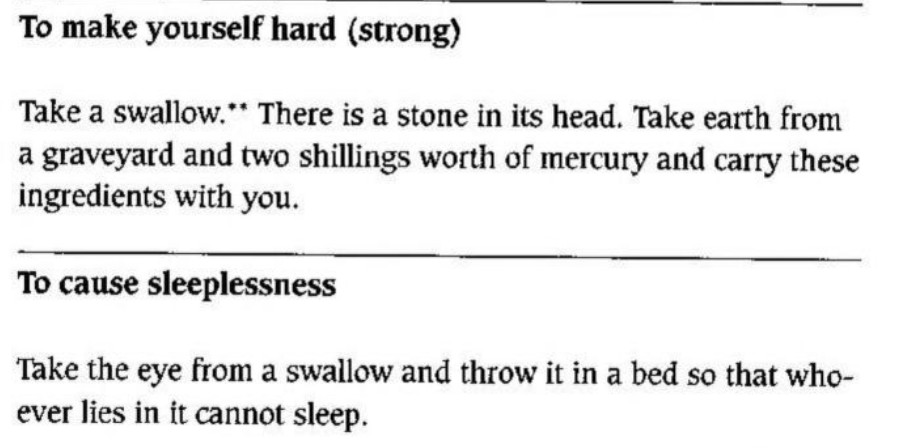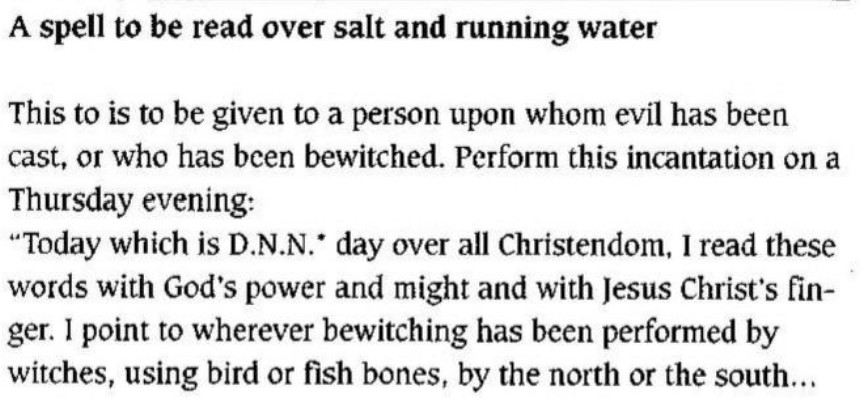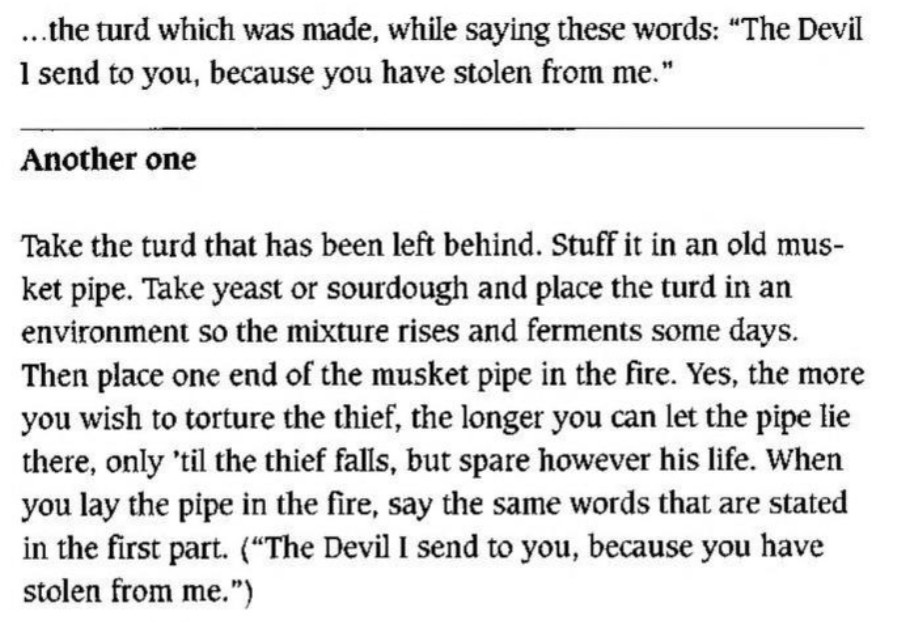Cunning Folk
"...their antecedents trac[e] back at least as far as the Anglo-Saxons…[t]hey offered to tell fortunes, find lost or stolen objects and buried treasure, and create love potions – magical solutions to problems that people encountered in daily life – and were sought for their healing powers at times of crisis. Through magic, they fulfilled a need in the community that was not being met elsewhere." –Judith Bonzol, "The Death of the Fifth Earl of Derby: Cunning Folk and Medicine in Early Modern England"
It is easy to slap the "witchcraft" label on cunning folk. With only a surface glance at quotes like the one above, it is not out of bounds to call cunning folk witches. But this is simply not true.
"Cunning folk, also known as folk healers or wise folk, were practitioners of folk medicine, helpful folk magic and divination in Europe…[t]heir services also included thwarting witchcraft."
Episode: File 0104: Sex, Magic and Yacht Parties
Release Date: July 14 2023
Researched and presented by Halli
In Europe, from the Middle Ages until the 20th century, you could find cunning folk in almost every village and town. (We know from Judith Bonzol's article that there is documentation of cunning folk dating even further back.) They all had their own names and titles, too, but most of those names harkened back to things associated with healing, repairing, knowledge, and wisdom.
Names given to folk-healers and magic-workers in Europe include:
the Danish kloge folk ("wise folk")
the Dutch toverdokters ("magic-doctors") or duivelbanners ("devil-banners")
the Finnish and Karelian tietäjät ("knowers")
the French devins-guérisseurs ("soothsayer-healers") and leveurs de sorts ("curse-lifters")
the German Hexenmeister or Kräuterhexen ("herb witches")
the Irish bean feasa ("woman of knowledge"), banfháidh or fáidhbhean ("seeress")
the Italian fattucchiere ("fixers"), guaritori ("healers") or benandanti ("good walkers")
the Portuguese curandeiros/as, benzedeiros/as ("blessers") or mulheres de virtude ("women of virtue")
the Slavic vedmaki ("warlocks")
the Spanish curanderos ("healers")
the Swedish klok gumma ("wise old woman") or klok gubbe ("wise old man")
Despite this wide and varied history, scholarship on Cunning Folk is still scarce. Britain is oft-studied, due to its unfortunately well-known history of persecuting witches in the name of God, but outside of there, cunning folk history is fairly scarce (and what is available is largely locked behind database paywalls). From my reading, it's clear that scholars at first tended to use the Cunning Folk label in different ways. It could mean simply folk healers and herbalists, like those we picture delivering babies and making simple herbal solutions; shysters and charlatans looking to make a quick buck off people in need; or, following in the footsteps of the godly clerics of the Church of England, witches.
But Cunning Folk were none, and all, of these. Mostly I want to emphasize that Cunning Folk were, by and large, helpful members of their communities who did make herbal solutions and deliver babies, while some of them (though quite few up until the industrialization of medicine in the eighteenth and nineteenth centuries) did con people. And others yet did practice what the Church deemed witchcraft. No group is homogeneous. How we view Cunning Folk now is only one of many, many examples of history being written by those in charge. Cunning Folk often had their own kind of power, but it was sown with the trust of their friends and neighbors and considered to be a very special bond.
And once religion was involved? Then it didn't matter what Cunning Folk labeled themselves as or who they had helped in the past.
I ran across the term "Cunning Folk" while reading up on witchcraft and occult practices for a novel I'm working on. One of my main characters, Aubrey, comes from a family of French Cunning Folk. From there, my "history" is bent and twisted in the name of fantasy fiction, but the concept is real. Still, my curiosity piqued, I knew I wanted to tackle this topic for a HEX episode as well and here we are.
We'll dive into England's history of Cunning Folk a bit later, but I wanted to start with some examples of Cunning Folk from Europe.
Scandinavia
"The Wise Ones" were elder members of their community, looked to and relied upon as midwives, healers, and advisors. The names varied across Scandinavia, but the purpose was quite similar across kingdoms.
Interestingly, Norwegian and Danish Cunning Folk often had copies of the "Svartebok", or "black book", which many thought to be originally authored by Cyprianus, or Cyprian of Antioch. It was not a singular book copied over and over again, but a general name given to a Cunning Folk's book of spells and recipes and traditional knowledge.
This is where the history gets a little bit muddled. Scandinavia has a wide claim to these Cyprianus spellbooks, but German Cunning Folk had their own version of the Cyprianus as well. It gets even more muddled because some believed the book was actually the Sixth and Seventh books of the Bible (or "Books of Moses"), something that was left out of the Old Testament by the educated so the common folk "would not learn the knowledge held within the text". In Scandinavia, Cyprianus was often seen as a "Faustian" figure, someone who learned magic through a deal with the Devil. One version of this story even made Cyprianus "so evil that the Devil threw him out of Hell" and he wrote the text to have his revenge. And then even stranger, a tale told in the printed Danish spell book "Oldtidens Sortebog", or "Old Time Magic Book", says that Cyprianus was a beautiful and pious nun from Mexico from the fourteenth century. She is thrown into a dungeon, where Cyprianus "rends her cloth and commits her magic knowledge to the rags, written in her own blood. Her text was then found in an old castle."
Other tales involve other deals with the Devil or summoning demons to learn spells, or perhaps ministers obtained copies of the book through their studies at universities. (It is worth noting that ministers' wives "often functioned as folk healers in their rural communities.) And like any good grimoire, the book was often said to be bound to its owner and hard to get rid of; you couldn't dump it into a lake or throw it into a fireplace. It would continue to exist, returning to its owner every single time. We see this idea pop up often in fantasy, the magical book or sword or other item that is bound to someone and causes all kinds of mayhem and/or persecution. (I admit I love this concept and am using it in my novel. Magic books cause all sorts of trouble.)
For those who believed that Cyprianus, or Saint Cyprian of Antioch (also known as the Saint of Necromancers) wrote the original Cyrpianus black book, it gets even wilder. Saint Cyprian is honored in the Catholic Church, Eastern Orthodox Church, and Oriental Orthodoxy. He's known by the title of "the Magician" and dealt in sorcery.
There is a "Great Book of Saint Cyprian" - not the same as the Cyprianus in Scandinavia - referring to different grimoires from the 17th, 18th, and 19th centuries - all falsely attributed to the 3rd century Saint Cyprian. The Great Book of Saint Cyprian comes from popular legend in Iberia, Spain, and Portugal. (This book could be its own topic of research, with how it affects local legend and history.)
Of note in the Scandinavian Cyprianus and the information continued therein for Cunning Folk is "The Black Book of Elverum". Author Mary Rustad came across a few copies of this particular Cyprianus back in the 1990s. It is a Norwegian book that reveals the struggles of peasants and common folk – Cunning Folk included – as they dealt with everyday life. From how they farmed, fished, hunted, and went to war, to how they thought about ghosts, witches, and the supernatural, "The Black Book of Elverum" is a treasure trove of missing history. The pages are filled with remedies Cunning Folk would make for everyday problems like lice, bedbugs, and infections; also spells to help track down missing and/or stolen items (peasants were very poor and even losing a single cow could be devastating). Interestingly, the book also features formulas for punishing thieves, such as poking out their eye – something that goes all the way back to Ancient Egypt.
"The Black Book of Elverum" also contains spells and recipes to increase male potency, increase the odds of becoming pregnant, how to induce labor, and ease the pain of childbirth. Other incantations "sought to calm anger, cure alcoholism, or balance the prevailing hardship by instilling hopes of great wealth". It is a fascinating look at everyday life, and a depressing one, from a time when the everyday was deeply dangerous.
From the introduction to "The Black Books of Elverum":
"The book that has left the most impression on the Norwegian Black Book tradition is recognized as Danish. It is probably from 1608 and was written by a Lutheran minister and spread both in Denmark and Norway by the clergy. It was dedicated to the famous magician Cyprianus, who around year 300 was the Bishop of Antioch and a Roman Catholic martyr and saint…."
"The Black Book, in its early beginnings was used by few, if only because of the lack of reading abilities at that time. But after a while it had a larger circulation. It is assumed that, at the beginning of the 1800s, some hundred books were in circulation in Norway. They were used by people of widely different social status, from clergy to wise people, who entirely or partly made a living by helping others."
"The most extraordinary feature about these books is the almost total lack of advice concerning sicknesses caused by evil spirits, although Norwegian folklore is usually full of it. The explanation could be that the author lived at a time when the belief that sicknesses was caused by spirits was beginning to lose its hold. Belief in other evil powers was clearly enough."
Examples of Practices from the book





In the 17th century, some Scandinavian Cunning Folk were tried and punished for "superstition", not witchcraft. Supernatural illnesses and cures were not looked down upon by religion for a long time, since it was a firmly held belief that witches were often the causes of those illnesses. The church often praised the work of Cunning Folk, and we can't discount the notion that the church understood how deeply integrated Cunning Folk were in their communities, often long before any form of Christianity took hold. So to be charged with "superstition", you were being accused of dabbling with demons; not full-on witchcraft, but close enough to make the church want to throw you in a dungeon. Or make you run a gauntlet.
Running the gauntlet is kind of what we picture - someone runs between two rows of soldiers who have batons or sticks and beat the person running. You run the gauntlet as many times as dictated by the magistrate or justice of the peace for your punishment.
"In the 1670s, the wise man Johan Eriksson of Knutby was sentenced to seven gauntlet for 'superstition', and again in the 1680s to nine…Brita Biörn of Gotland said in court that she learned to heal the sick when she spent some time in the underworld, and she was sentenced to prison terms in both 1722 and 1737. The punishment of Sweden's 'cunning folk' only seemed to have the opposite effect. Ericsson said that his clients had been coming in greater numbers after the rulings against him, and that he would be forced to hide if he was to obey the court and refrain from his practice, and in the Biörn case, the vicar complained that people from throughout the country came to seek her help, and relied on her as a God after her first sentence."





Even up to the early 1900s did Cunning Folk gain fame in Scandinavia, particularly in Norway. These customs and treatments by Cunning Folk persisted into the 20th century, until access to doctors and hospitals became more accessible. Unfortunately, these folk traditions and knowledge didn't persist long after Norwegians migrated away from their homeland; migrants to the Americas often tried to uphold their customs but they quickly died out in Norwegian-American communities around the 1920s.
Full Source List
- https://en.wikipedia.org/wiki/Cunning_folk
- https://guides.library.uab.edu/c.php?g=1048546&p=7609198
- https://www.cambridge.org/core/journals/medical-history/article/cunningfolk-in-the-medical-marketplace-during-the-nineteenth-century/C39904711CB1F582D472DBE54ECF1BAA
- https://en.wikipedia.org/wiki/Cyprianus
- https://en.wikipedia.org/wiki/Cyprian_and_Justina
- https://en.wikipedia.org/wiki/Book_of_Saint_Cyprian
- https://archive.org/details/the-black-books-of-elverum/page/n5/mode/2up





